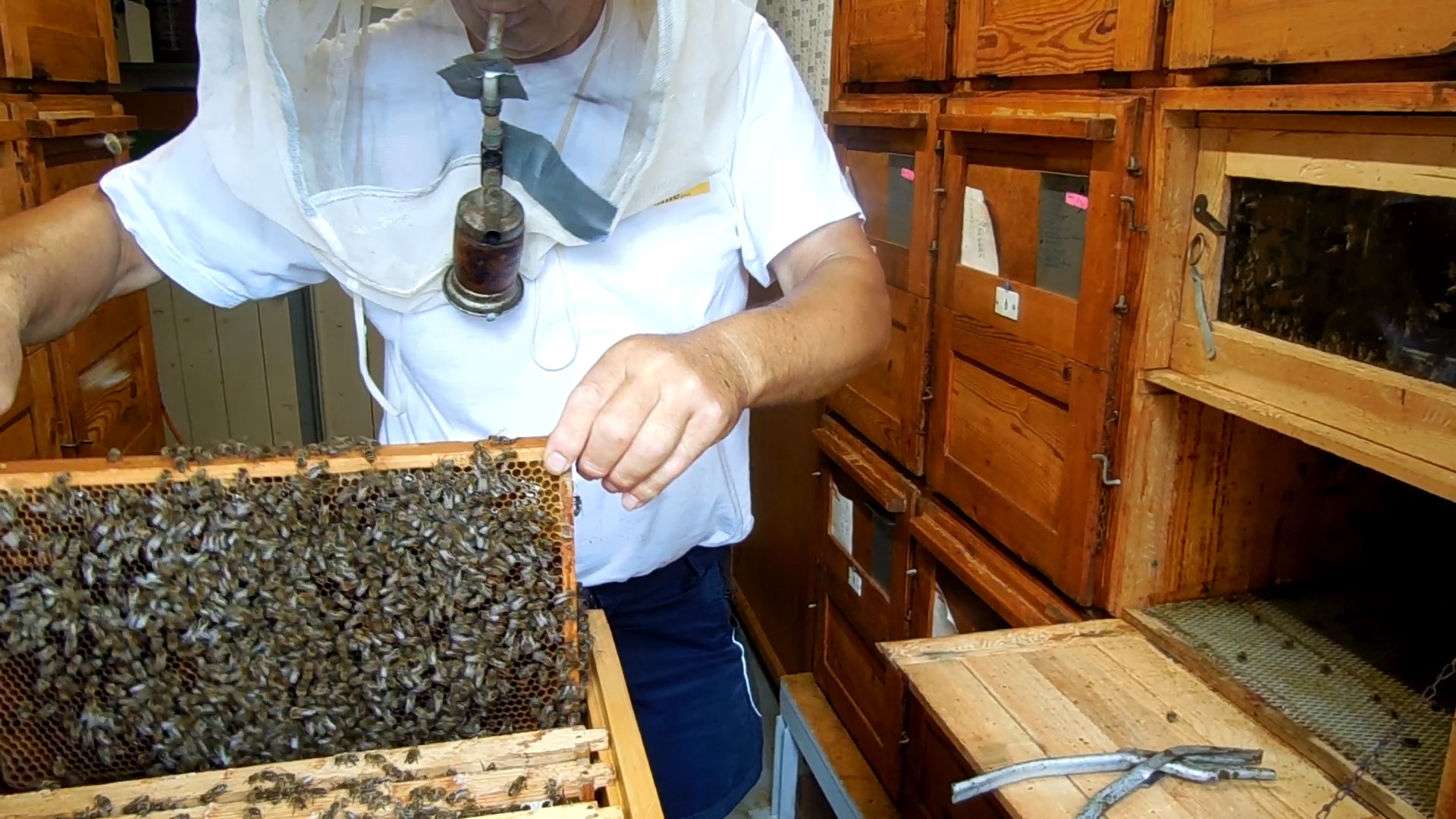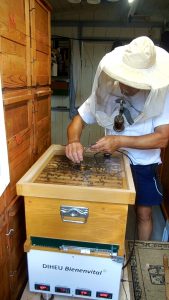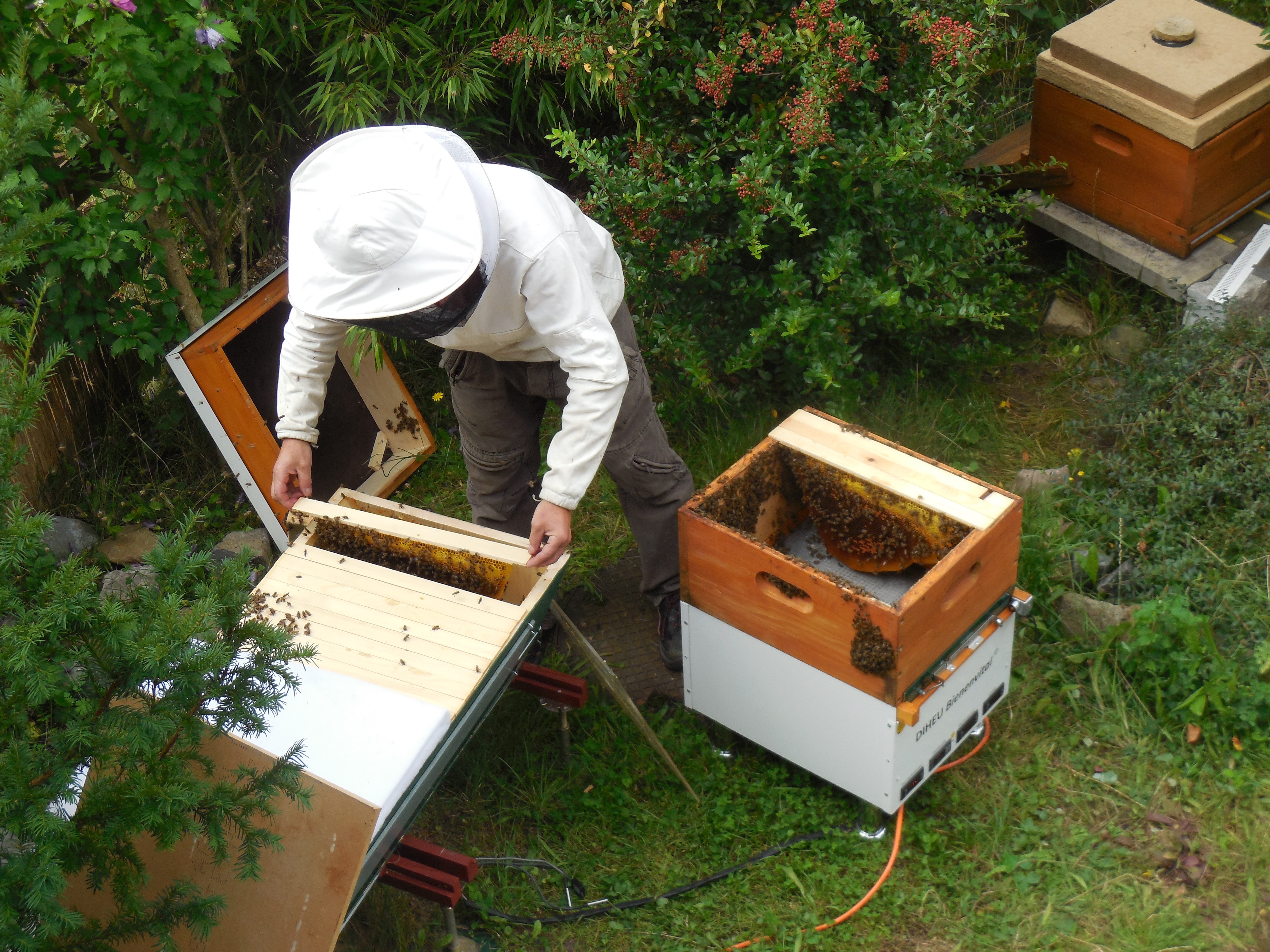
A parasite threatening the species
The varroa mite and viruses transferred by it are the main reasons for bee dying. The vermin infest the grubs as well as adult bees and eats the bee brood. Without a treatment of the varroa mites a bee colony which has once been infested can’t hardly heal itself. Bee colonies are one of the most useful animals and are an important part in the ecological balance.
Conservative methods of treatment are not the future!
The varroa mite has been domestic in Germany and western Europe since the 1980s and spreads rapidly. So far beekeepers have tried to tackle the mite population with conservative methods like formic acid, thymol, lactic or oxalic acid, bayvarole or pericine. Unfortunately these methods only result in moderate success and partly have considerable side-effects. Through the food chain the toxic active agents in these compounds finally reach us, the human beings.


Hyperthermia – treatment with warmth
Hyperthermia is a method where the beehive is so strongly warmed that the varroa mites are killed. The vermin die at temperatures of over 38°C. Bees can well stand temperatures of clearly more than 40°C. When using the hyperthermia method you must be careful that the beehive is just warmed so far that the honeycombs will not be damaged. As the treatment method can do without chemical compounds or medicine it is generally regarded as the most ecological and sustainable one against the unloved mite.
